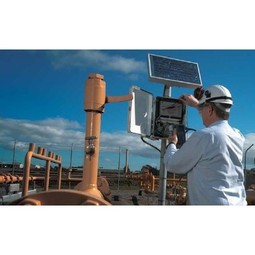Technology Category
- Analytics & Modeling - Digital Twin / Simulation
- Networks & Connectivity - Routers & Bridges
Applicable Industries
- Transportation
- Utilities
Applicable Functions
- Procurement
- Product Research & Development
Use Cases
- Digital Twin
- Virtual Prototyping & Product Testing
About The Customer
The customer in this case study is the New York State Department of Transportation (NYSDOT). NYSDOT is responsible for the development and operation of highways, railroads, mass transit systems, ports, waterways, and aviation facilities in the U.S. state of New York. This includes the development and implementation of the state's transportation policy, as well as the coordination of public and private transportation services. In this project, NYSDOT was tasked with replacing the aging East 138th Street Bridge in New York City, a critical part of the city's traffic grid that sees daily traffic volumes exceeding 150,000 vehicles. The project's complexity was compounded by the need to keep the bridge functional throughout the replacement process, the bridge's location in a busy urban area, and the onset of the COVID-19 pandemic.
The Challenge
The East 138th Street Bridge, built in 1938, is a critical part of New York City's traffic grid, accommodating over 150,000 vehicles daily. However, the bridge's limited vertical clearance has led to numerous accidents, and its aging infrastructure was unable to handle the heavy vehicular and pedestrian traffic. The New York State Department of Transportation (NYSDOT) initiated a USD 48 million project to replace the bridge with a new 100-foot, single-span bridge. The project's complexity was compounded by the need to keep the bridge functional throughout the replacement process, the bridge's location in a busy urban area, and the onset of the COVID-19 pandemic. The project also faced challenges related to utility management, including the design of an abutment to span a 58-foot-wide opening for a future sewer line expansion. Traditional plan sheets were deemed inefficient for stakeholder and community understanding of the project, necessitating a more innovative approach.
The Solution
NYSDOT turned to Bentley applications to create a digital twin of the bridge as the primary contract document and public outreach tool. Using OpenBridge Modeler, ProSteel, and MicroStation, NYSDOT developed a 3D model of the entire bridge structure, enabling the team to build directly from the model without needing a complete set of 2D plans. The iTwin Design Review was integrated into the project, allowing over 180 reviewers across 15 agencies to access and comment on the model digitally. The 3D model was imported into SYNCHRO to build a 4D simulation depicting the construction staging, and LumenRT was used to generate animated renderings from the 4D simulation for public outreach. The digital twin helped identify and resolve potential issues before construction, allowed contractors to calculate more accurate bids, and facilitated the prefabrication and installation of modular deck beams.
Operational Impact
Quantitative Benefit

Case Study missing?
Start adding your own!
Register with your work email and create a new case study profile for your business.
Related Case Studies.

Case Study
IoT Solutions for Smart City | Internet of Things Case Study
There were several challenges faced: It is challenging to build an appliance that can withstand a wide range of voltage fluctuations from as low at 90v to as high as 320v. Since the device would be installed in remote locations, its resilience was of paramount importance. The device would have to deal with poor network coverage and have the ability to store and re-transmit data if networks were not available, which is often the case in rural India. The device could store up to 30 days of data.

Case Study
Automation of the Oguz-Gabala-Baku water pipeline, Azerbaijan
The Oguz-Gabala-Baku water pipeline project dates back to plans from the 1970’s. Baku’s growth was historically driven by the booming oil industry and required the import of drinking water from outside of the city. Before the construction of the pipeline, some 60 percent of the city’s households received water for only a few hours daily. After completion of the project, 75 percent of the two million Baku residents are now served around the clock with potable water, based on World Health Organization (WHO) standards. The 262-kilometer pipeline requires no pumping station, but uses the altitude differences between the Caucasian mountains and the capital to supply 432,000 m³/d to the Ceyranbatan water reservoir. To the people of Baku, the pipeline is “the most important project not only in 2010, but of the last 20 years.”

Case Study
GPRS Mobile Network for Smart Metering
Around the world, the electricity supply industry is turning to ‘smart’ meters to lower costs, reduce emissions and improve the management of customer supplies. Smart meters collect detailed consumption information and using this feedback consumers can better understand their energy usage which in turn enables them to modify their consumption to save money and help to cut carbon emissions. A smart meter can be defined in many ways, but generally includes an element of two-way communication between the household meter and the utility provider to efficiently collect detailed energy usage data. Some implementations include consumer feedback beyond the energy bill to include online web data, SMS text messages or an information display in consumers’ premises. Providing a cost-effective, reliable communications mechanism is one of the most challenging aspects of a smart meter implementation. In New Zealand, the utilities have embraced smart metering and designed cost effective ways for it to be implemented. The New Zealand government has encouraged such a move to smart metering by ensuring the energy legislation is consistent with the delivery of benefits to the consumer while allowing innovation in this area. On the ground, AMS is a leader in the deployment of smart metering and associated services. Several of New Zealand’s energy retailers were looking for smart metering services for their residential and small business customers which will eventually account for over 500,000 meters when the multi-year national deployment program is concluded. To respond to these requirements, AMS needed to put together a solution that included data communications between each meter and the central data collection point and the solution proposed by Vodafone satisfied that requirement.

Case Study
Airport SCADA Systems Improve Service Levels
Modern airports are one of the busiest environments on Earth and rely on process automation equipment to ensure service operators achieve their KPIs. Increasingly airport SCADA systems are being used to control all aspects of the operation and associated facilities. This is because unplanned system downtime can cost dearly, both in terms of reduced revenues and the associated loss of customer satisfaction due to inevitable travel inconvenience and disruption.

Case Study
NB-IoT connected smart meters to improve gas metering in Shenzhen
Shenzhen Gas has a large fleet of existing gas meters, which are installed in a variety of hard to reach locations, such as indoors and underground, meaning that existing communications networks have struggled to maintain connectivity with all meters. The meter success rate is low, data transmissions are so far unstable and power consumption is too high. Against this background, Shenzhen Gas, China Telecom, Huawei, and Goldcard have jointly trialed NB-IoT gas meters to try and solve some of the challenges that the industry faces with today’s smart gas meters.

Case Study
IoT-based Fleet Intelligence Innovation
Speed to market is precious for DRVR, a rapidly growing start-up company. With a business model dependent on reliable mobile data, managers were spending their lives trying to negotiate data roaming deals with mobile network operators in different countries. And, even then, service quality was a constant concern.



